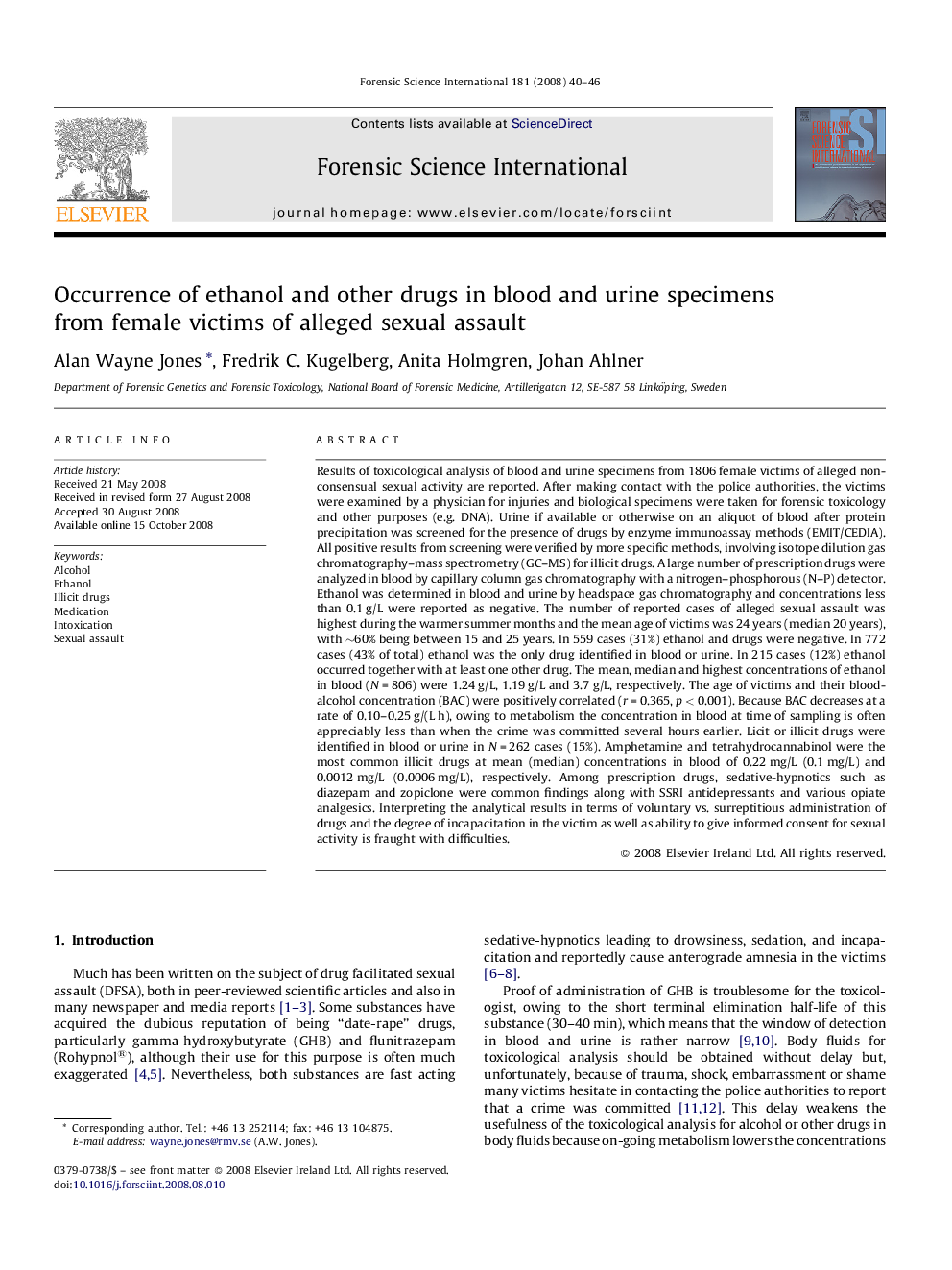| کد مقاله | کد نشریه | سال انتشار | مقاله انگلیسی | نسخه تمام متن |
|---|---|---|---|---|
| 97595 | 160500 | 2008 | 7 صفحه PDF | دانلود رایگان |

Results of toxicological analysis of blood and urine specimens from 1806 female victims of alleged non-consensual sexual activity are reported. After making contact with the police authorities, the victims were examined by a physician for injuries and biological specimens were taken for forensic toxicology and other purposes (e.g. DNA). Urine if available or otherwise on an aliquot of blood after protein precipitation was screened for the presence of drugs by enzyme immunoassay methods (EMIT/CEDIA). All positive results from screening were verified by more specific methods, involving isotope dilution gas chromatography–mass spectrometry (GC–MS) for illicit drugs. A large number of prescription drugs were analyzed in blood by capillary column gas chromatography with a nitrogen–phosphorous (N–P) detector. Ethanol was determined in blood and urine by headspace gas chromatography and concentrations less than 0.1 g/L were reported as negative. The number of reported cases of alleged sexual assault was highest during the warmer summer months and the mean age of victims was 24 years (median 20 years), with ∼60% being between 15 and 25 years. In 559 cases (31%) ethanol and drugs were negative. In 772 cases (43% of total) ethanol was the only drug identified in blood or urine. In 215 cases (12%) ethanol occurred together with at least one other drug. The mean, median and highest concentrations of ethanol in blood (N = 806) were 1.24 g/L, 1.19 g/L and 3.7 g/L, respectively. The age of victims and their blood-alcohol concentration (BAC) were positively correlated (r = 0.365, p < 0.001). Because BAC decreases at a rate of 0.10–0.25 g/(L h), owing to metabolism the concentration in blood at time of sampling is often appreciably less than when the crime was committed several hours earlier. Licit or illicit drugs were identified in blood or urine in N = 262 cases (15%). Amphetamine and tetrahydrocannabinol were the most common illicit drugs at mean (median) concentrations in blood of 0.22 mg/L (0.1 mg/L) and 0.0012 mg/L (0.0006 mg/L), respectively. Among prescription drugs, sedative-hypnotics such as diazepam and zopiclone were common findings along with SSRI antidepressants and various opiate analgesics. Interpreting the analytical results in terms of voluntary vs. surreptitious administration of drugs and the degree of incapacitation in the victim as well as ability to give informed consent for sexual activity is fraught with difficulties.
Journal: Forensic Science International - Volume 181, Issues 1–3, 25 October 2008, Pages 40–46